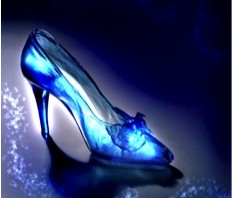This is the powerpoint from Madeleine Dresden’s presentation at the 2014 American Folklore Society Conference in Santa Fe. Glass Slippers and Small Screens: Rags to Riches and the American Dream
Tag Archives: fttv.humwp.byu.edu
To Research and To Educate
Look—there she goes, the girl in the red hood, red cape, red hoodie, wolfskin. Do you see her? Does she carry a basket full of fresh bread and warm milk? Or does she seek to protect her sweet, sweet tortitas from the dapper wolf? And when she meets that wolf, does she reveal her own …
Cinderella’s Sidekicks and their Choices, or Lack Thereof
When Cinderella is adapted into other mediums, especially when these adaptations are intended for children or families, the animals barely in the original tale become sidekicks with a lot more screen-time. So what happens when you take a plot point and turn it into a character? You give it the ability to make choices within …
Continue reading “Cinderella’s Sidekicks and their Choices, or Lack Thereof”
The ‘Why’ of Fairy Tales and Animation
Nearly half of the data points in our FTTV database come from animated shows or specials, including the oldest entries in our database, the 1922 animated short “Cinderella” (video) and “Three Little Pigs” from 1933 (video). This led me to a question. What is it about fairy tales that lends them so well to animation? …
Young Meets Old: Contemporary Children’s Television and Traditional Grown-Up Fairy Tale Characters
Television for children has characters that are children, right? It seems like an obvious assumption. The most clear way to communicate to a viewer that a show is for children, besides using puppets or animation, is to have the characters on the screen be the same age as the target audience. How does this relate …
Visualizing Wonder: English 394R Winter 2017
English 394 is no ordinary English class, this class is specially designed to teach you marketable skills that will help you in the workplace. In this class, you will: Gain a working knowledge of the contemporary scholarship in the field of fairy tale studies in the context of media studies and adaptation studies Build a …
Continue reading “Visualizing Wonder: English 394R Winter 2017”
Girls and Boys and Animals: Graphing Patterns in Mash-up Episodes
One of the unique elements of TV is that they don’t have to market towards a specific group to buy their product, the way movies, books, or toys do, so they work to make a product that will attract as many viewers as possible across a much wider spectrum. Though children’s TV is created with children …
Continue reading “Girls and Boys and Animals: Graphing Patterns in Mash-up Episodes”
Fairy Tales on the Small Screen: Summing up the Salon
Not so long ago, not so far away, a group of project participants and like minded individuals gathered to discuss the classic salon topic of fairy tales and this newfangled invention of television. Well, maybe television is not exactly bleeding edge, but it would certainly be foreign to those creating the genre of fairy tales …
Continue reading “Fairy Tales on the Small Screen: Summing up the Salon”
Fairy Tale Salon : Event on October 20!
We will be having a wonderful event next week in 4101 JFSB where we hope to have some cool conversations about fairy tales and television and their interesting relationship. It’s a salon, so there will be great discussion and some refreshments and we hope that you all come and contribute and join in! From 5 …
But HOW are the Fairy Tales Mashed-up in Children’s Television?
Fairy Tale Mashups. We all know about them. We’ve all seen them in many forms, from books to movies to TV. Fairy tale narratives are so short, simple, and familiar that it’s easy to combine them to make something new and fun out of these old stories. Studying the ‘why’ of fairy tale mashups gets …
Continue reading “But HOW are the Fairy Tales Mashed-up in Children’s Television?”
